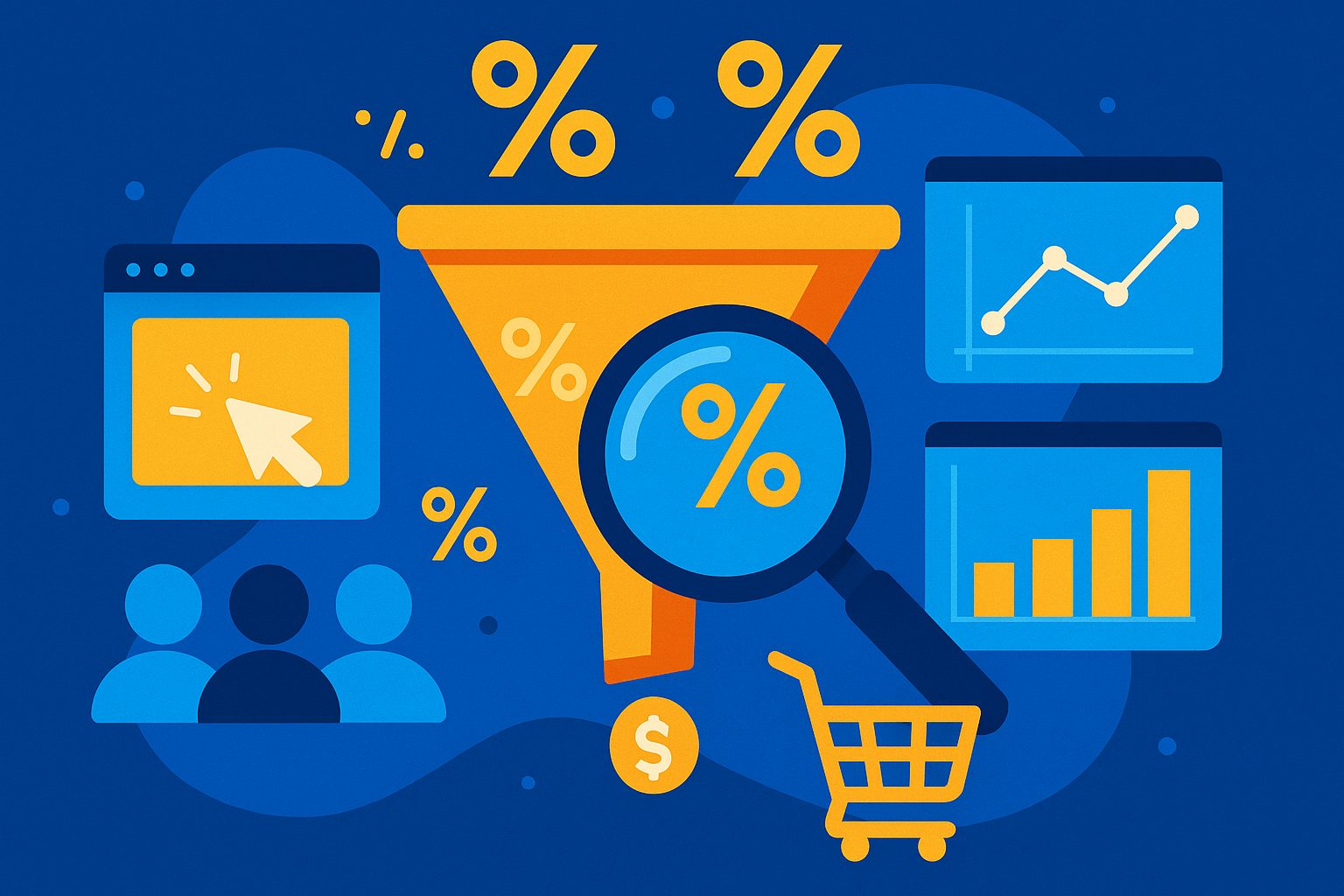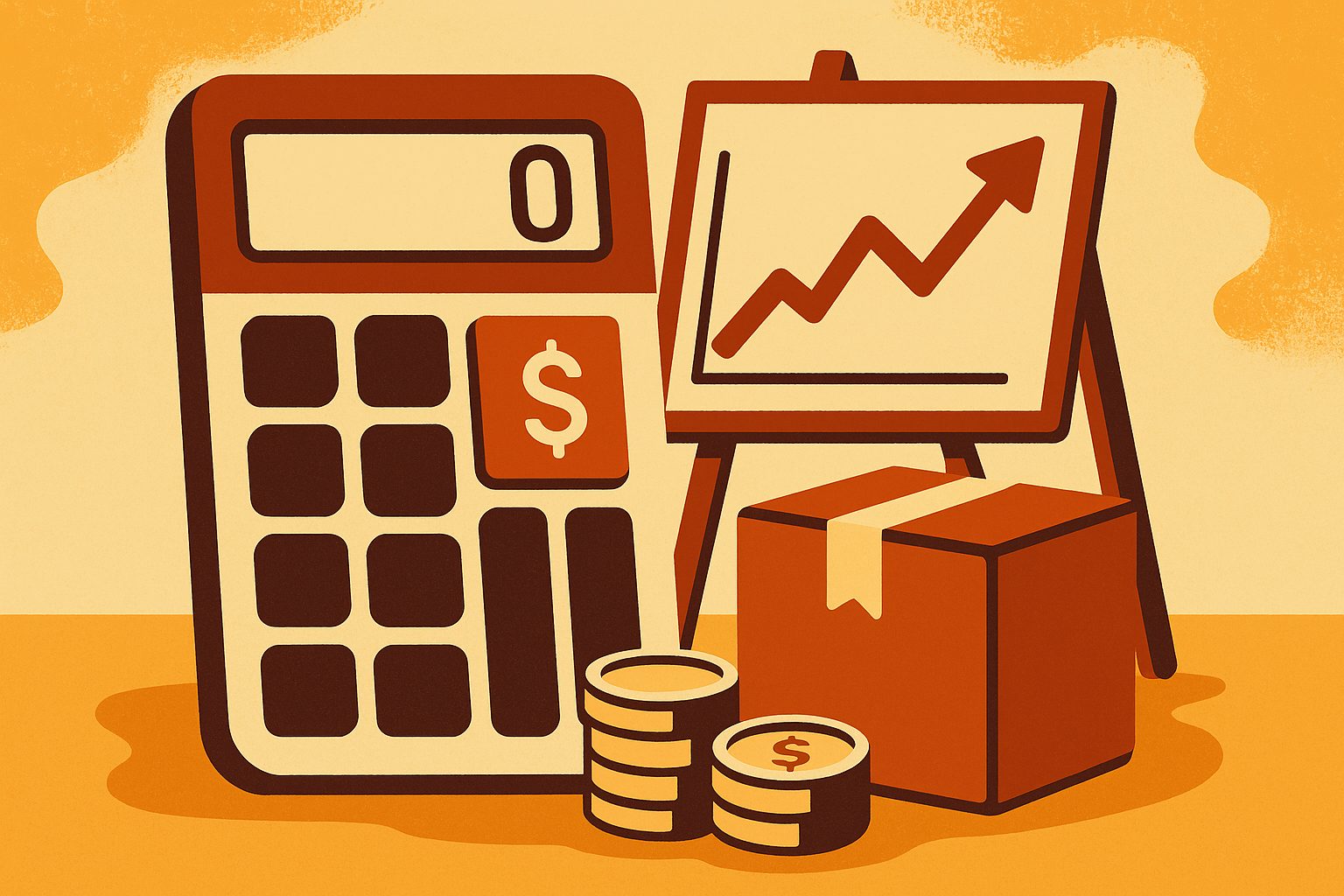Embracing Precision: Why a Conversion Rate Analyzer Transforms Your Marketing
In an age where every visitor click holds potential revenue, merely driving traffic is no longer enough. Savvy marketers recognize that understanding and improving the percentage of visitors who complete desired actions—whether making a purchase, signing up for a newsletter, or requesting a demo—is the ultimate key to sustainable growth. A Conversion Rate Analyzer serves as a sophisticated lens, revealing the true performance of your digital touchpoints. Unlike generic dashboards that offer surface-level metrics, this specialized tool dives into granular details, pinpointing exactly where visitors drop off and what drives them across the finish line. By harnessing the power of precise analysis, businesses can channel resources toward strategies that yield real results, fostering a cycle of continuous optimization and unparalleled ROI.
Conversion Rate Analyzer
Under the Hood: The Mechanics of a Conversion Rate Analyzer
At its core, a Conversion Rate Analyzer ingests raw user interaction data and transforms it into actionable insights. It captures every click, scroll, and form submission, then stitches these events together to map the customer journey from entry to conversion. Through a combination of JavaScript tracking snippets, server-side logs, and integrations with analytics platforms, the tool assembles a rich dataset. Behind the scenes, algorithms calculate conversion rates for individual pages, traffic sources, devices, and audience segments. Some advanced solutions incorporate machine learning models to predict which user behaviors most strongly correlate with successful conversions. By automating these complex calculations, marketers are freed from manual data wrangling, allowing them to focus on strategy rather than spreadsheets.
Building Blocks: Essential Metrics for Deep-Dive Analysis
A robust Conversion Rate Analyzer goes beyond the headline conversion percentage. It empowers you to dissect performance through multiple lenses: micro-conversion tracking reveals the impact of intermediate steps like add-to-cart clicks or email opens; time-on-page analysis uncovers engagement patterns; funnel visualization exposes where potential customers abandon paths; and segmentation highlights disparities across demographics, traffic sources, and devices. Additionally, bounce rate and exit rate metrics contextualize conversion figures, helping you understand whether low rates stem from poor targeting or subpar user experience. For e-commerce, average order value and cart abandonment rates add further depth. Each metric shines a spotlight on a different facet of customer behavior, enabling you to craft interventions that address specific weaknesses rather than applying generic fixes.
From Numbers to Narratives: Turning Data into Strategy
Once you’ve gathered a suite of conversion metrics, the challenge lies in weaving them into a coherent story. Identifying a high drop-off rate on your product pages prompts a look at load times, mobile responsiveness, and perceived trust signals like reviews or security badges. If conversion rates spike for one traffic source but lag for another, you may need to tailor landing page messaging to align more closely with visitor intent. A Conversion Rate Analyzer’s dashboard often features customizable reports that allow you to juxtapose metrics—comparing bounce rates against conversion rates, for example—to uncover hidden relationships. The real power emerges when these insights guide targeted A/B tests, personalized messaging, and UX enhancements, ensuring that every experiment is data-driven and converges toward your overarching business objectives.
Steering Clear of Bias: Common Mistakes in Conversion Measurement
Even the most advanced analytics tools can mislead when inputs are flawed or interpretations are careless. A pervasive error involves tracking only last-click conversions, which ignores the cumulative influence of multiple touchpoints. This oversight can inflate the perceived power of certain channels while undervaluing others. Similarly, failing to account for seasonality or external factors like promotions can distort long-term trends. Sampling bias poses another risk when working with large datasets—tools that downsample data to preserve performance may miss subtle but meaningful patterns. To maintain accuracy, ensure your tracking is comprehensive, audit tag implementations regularly, and seek a balance between aggregated metrics and segmented views. By acknowledging the limitations of your data and refining your methodologies, you uphold the integrity of your conversion rate assessments.
Supercharging Analysis: Advanced Techniques and Personalization
Once you’ve mastered the basics, it’s time to elevate your approach with more sophisticated capabilities. Cohort analysis lets you examine how conversion rates evolve for specific groups over time, revealing whether changes in your site or messaging nurture long-term improvements. Heatmaps and session recordings—often integrated into conversion analytics platforms—offer qualitative context by showing exactly how users interact with your pages. Predictive modeling can forecast the impact of proposed changes, guiding allocation of development resources. Personalization tools, fueled by insights from your analyzer, allow you to dynamically tailor content based on visitor attributes like location, referral source, or past behavior. By orchestrating these advanced techniques, you transform your conversion rate analysis from reactive reporting into proactive growth engineering.
Proof in Practice: Success Stories from Leading Brands
Consider a subscription-based education platform that leveraged a Conversion Rate Analyzer to unravel puzzlingly low sign-up rates despite high ad engagement. The analyzer revealed that mobile users struggled with a cumbersome checkout flow. Armed with these insights, the team streamlined the form fields, introduced social login options, and optimized button placement. Within weeks, mobile conversion rates doubled, boosting overall subscriptions by 35 percent. In a different scenario, a B2B software vendor discovered through cohort tracking that first-time visitors who downloaded an ebook had a 50 percent higher demo request rate. By highlighting this content more prominently on paid search landing pages, the company saw a 20 percent lift in qualified leads without increasing ad spend. These real-world examples illustrate how precise analysis drives targeted improvements that compound into significant revenue gains.
Seamless Integration: Plugging Your Analyzer into the Marketing Stack
The most impactful Conversion Rate Analyzers function as hubs within your broader marketing ecosystem. They offer pre-built connectors to email service providers, CRM systems, advertising platforms, and content management solutions. This interoperability ensures that conversion insights flow bidirectionally: you can trigger automated email follow-ups based on on-site behavior and feed enriched data back into your CRM to refine lead scoring. Tag management systems simplify deployment, while APIs allow developers to extend functionality or integrate custom events. By anchoring analysis in a connected environment, you eliminate data silos, foster cross-channel optimization, and create a unified view of customer interactions. The result is an agile marketing workflow where insights seamlessly translate into action across every touchpoint.
Charting the Road Ahead: Emerging Trends in Conversion Optimization
The landscape of conversion analysis is poised for rapid evolution. Privacy regulations and the phasing out of third-party cookies are reshaping tracking methodologies, pushing analytics platforms toward first-party data strategies and consent-based modeling. Artificial intelligence is set to play an even larger role, automating anomaly detection and recommending high-impact tests based on historical performance. Voice search and conversational interfaces will introduce new conversion pathways, demanding that analyzers adapt to multi-modal interaction data. Augmented reality and immersive experiences may soon become conversion channels themselves, requiring specialized metrics to measure engagement and completion. Staying abreast of these shifts means choosing a Conversion Rate Analyzer built for extensibility, one that embraces emerging data sources and upholds rigorous privacy standards.
Cultivating a Conversion-First Mindset: Embedding Analytics in Your Culture
Deploying powerful analytics tools is only half the battle; fostering a culture that truly values data-driven decision-making completes the transformation. Executive buy-in is critical: leaders must champion regular review of conversion metrics and tie performance targets to measurable outcomes. Cross-functional collaboration—uniting marketing, product, design, and engineering—ensures that insights lead to concrete improvements rather than languish in reports. Training programs and workshops can demystify analytics for non-technical stakeholders, empowering them to interpret dashboards and contribute hypotheses. By celebrating wins driven by conversion optimization and transparently sharing both successes and setbacks, you embed a continuous learning ethos. Over time, this collective commitment turns conversion rate analysis from an isolated function into the beating heart of your growth strategy.
Mapping Your Next Move: Leveraging Insights for Unstoppable Growth
In a marketplace where consumer expectations constantly evolve, the ability to understand and influence conversion behavior is invaluable. A Conversion Rate Analyzer offers an indispensable toolkit for decoding visitor intent, refining user experiences, and maximizing the impact of every marketing dollar. By combining rigorous data collection, thoughtful interpretation, and strategic experimentation, you convert raw metrics into a roadmap for future success. Whether you’re a scrappy startup aiming for rapid scale or an established enterprise striving for incremental gains, the insights yielded by your analyzer will guide you toward smarter investments and higher returns. As you chart your path forward, let data light the way—transforming every visitor interaction into an opportunity for growth.




